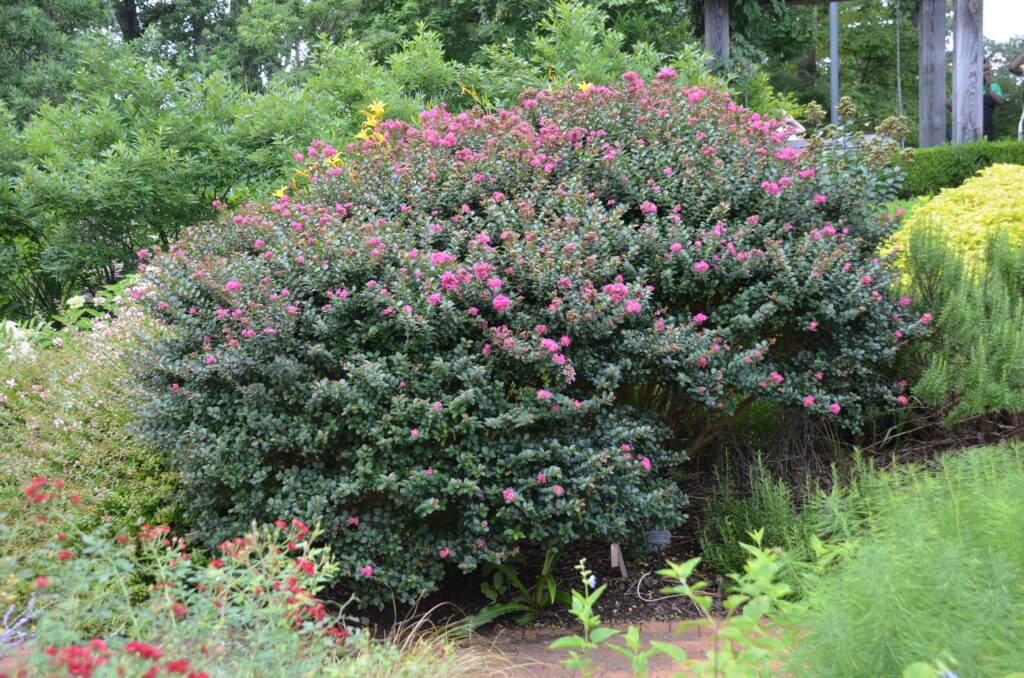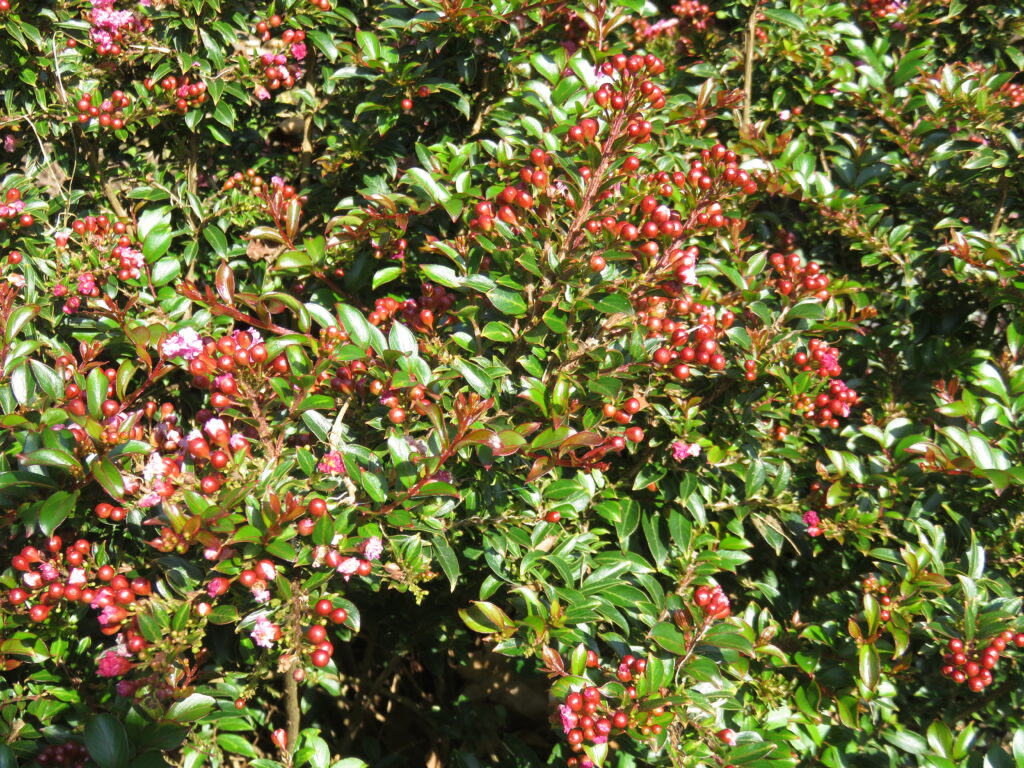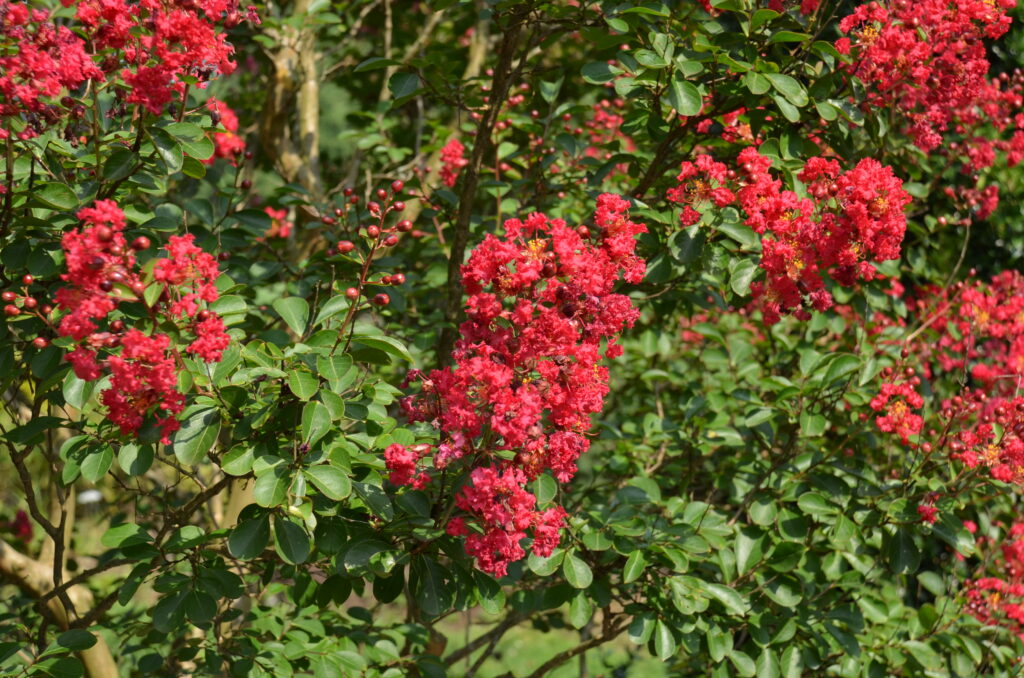
Gardeners who live in USDA zones 6 -10 can grow dwarf (shrubby) crapemyrtles either in the ground or in containers. In northern areas of the U.S., a few crape myrtle varieties are tender perennials and grown in containers. They’re overwintered in an unheated garage, shed or pots are dug into the ground.
These dwarf varieties are designed for mass planting, low hedging and screening, and in containers. I’ve identified 12 varieties that perform in garden beds or containers:
‘Pocomoke’ – features bright pink blooms and deep green foliage on a mounding shrub (3 – 5 feet high & 3 – 4 feet wide). (Zones 6-9)

‘Razzle Dazzle’ Series – mounding 3 to 4 feet tall and wide shrub form. The hardiest performers in the series are ‘Cherry Dazzle’ (red blooms) and ‘Berry Dazzle’ (fuchsia-purple blooms/ burgundy new foliage). (Zones 6-9)
‘Tightwad Red’ (Whit V) – produces dark-red flowers on a mounding plant (3-4 feet tall & 5-6 feet wide) with dense foliage. No seed capsules are formed. (Zones 7-10)

‘Victor’ – bears deep red flower with a narrow shrub form (3-6 feet tall & 2-4 feet wide). (Zones 6-9)
Barista® series (7 varieties) from Walters Gardens will grow 2 – 3 feet in height and width. Plants are rated hardy perennials in zone 5-6 and dieback to the ground. Plants re-emerge in the spring in Ohio, Illinois, and Michigan. They bloom on new wood in mid-late summer. In warmer climes Barista varieties do not die back in winter and their mature heights will be taller. (Zones 6-9)
Containers should be set in full sun and moderately watered. Once established after their first year, feed with a water-soluble fertilizer such as Miracle-Gro™ or Peters™ every 4-6 weeks. Do not fertilize after late summer (September 1).
In zone 5-6 winters, move container grown plants into an unheated garage or shed where temps won’t drop below 20 °F. Otherwise, backup with supplemental heating. Water plants once every 3-4 weeks. An alternative approach is to submerge pots outdoors in garden soil and heavily mulch in a heap of loose, non-packing leaves and pine needles. Push the leaf litter aside after the worse of winter low temps has left your geographic area. Re-cover with leaves during sudden temperature dips. In spring carry tender Barista crape myrtles back outdoors and resume regular watering and fertilizing.

 Posted in
Posted in 
